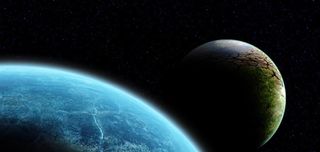
This story was updated on Dec. 21 at 1 p.m. EST.
Anyone worried that the world will come to an end Friday (Dec. 21) can scan the heavens online for any signs of death from above.
The online Slooh Space Camera has been broadcasting a series of live cosmic views all week, beginning Monday (Dec. 17). The free webcasts aim to help the public keep watch for any monster solar storms, impending asteroid strikes or other potential agents of the so-called "Mayan apocalypse" that doomsayers claim is set for Friday.
Slooh will be keeping tabs on the sun today (Dec. 21), with a panel of experts commenting on footage streaming live from the Prescott Observatory in Arizona. You can watch it live, embedded below. The next segment begins at 3 p.m. EST.
"Rather than merely offer scientists' dismissals of the many silly doomsday scenarios that have now been heard by almost everyone in the world, and which have reportedly produced panic in Russia, Slooh will take a 'let's see for ourselves' attitude," Astronomy Magazine columnist Bob Berman, who has been participating in the shows, said in a statement.
"By acting independently of any government agency, which assumedly would be disbelieved by the millions who are convinced a giant cover-up is in place, Slooh will observe the planets and the ecliptic plane for anything out of the ordinary," Berman added. [End of the World? Top Doomsday Fears]
Slooh is webcasting live footage from observatories in Arizona and the Canary Islands off the west coast of Africa. Each day focuses on a different apocalyptic "area of concern," from massive sun eruptions to a collision with a mythical "rogue planet," Slooh officials said.
Get the Space.com Newsletter
Breaking space news, the latest updates on rocket launches, skywatching events and more!
You can check out the schedule and watch the shows — which will also feature Slooh president Patrick Paolucci and other guests — at Slooh's website: http://www.slooh.com.
The doomsayers are worried because the 13th bak'tun (or 144,000-day cycle) of the Mayan Long Count calendar wraps up on Dec. 21, marking the end of a cycle of creation. But the ancient Maya probably would not have thought the world was going to end Friday, scholars say; rather, they likely would simply have celebrated and rolled the calendar over to a new bak'tun.
Scientists at NASA and other institutions have tried repeatedly to tamp down concerns about the 2012 doomsday, stressing that there's nothing in particular to be worried about this Friday.
"Our planet has been getting along just fine for more than four billion years, and credible scientists worldwide know of no threat associated with 2012," NASA researchers wrote in an apocalypse-debunking FAQ.
But Friday is a date of celestial significance, whether or not you believe in the doomsday scenarios. It's one of the year's two solstices, marking the start of winter in the Northern Hemisphere and the beginning of summer in the South. (The other solstice occurs in June.)
At the winter solstice, the sun pauses briefly after reaching its most southerly point in the sky. Thereafter, it begins to head northward once again as part of its annual cycle. Indeed, the word "solstice" is derived from the Latin sol ("sun") and sistere ("to stand still").
Friday will be the shortest day of the year for Northern Hemisphere dwellers, while folks in the South will enjoy the most sunshine of 2012 on that date.
Follow SPACE.com senior writer Mike Wall on Twitter @michaeldwall or SPACE.com @Spacedotcom. We're also on Facebook and Google+.
Join our Space Forums to keep talking space on the latest missions, night sky and more! And if you have a news tip, correction or comment, let us know at: community@space.com.

Michael Wall is a Senior Space Writer with Space.com and joined the team in 2010. He primarily covers exoplanets, spaceflight and military space, but has been known to dabble in the space art beat. His book about the search for alien life, "Out There," was published on Nov. 13, 2018. Before becoming a science writer, Michael worked as a herpetologist and wildlife biologist. He has a Ph.D. in evolutionary biology from the University of Sydney, Australia, a bachelor's degree from the University of Arizona, and a graduate certificate in science writing from the University of California, Santa Cruz. To find out what his latest project is, you can follow Michael on Twitter.
